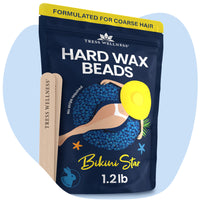If you have Bumpy Skin on Arms, you’re likely dealing with keratosis pilaris. This common condition results in small, rough bumps that can be a cosmetic concern. In this article, we’ll discuss its causes, symptoms, and effective treatments.
Key Takeaways
-
Keratosis pilaris, often called ‘chicken skin,’ is a common and harmless skin condition characterized by small, rough bumps primarily on the arms and thighs.
-
The main causes of keratosis pilaris are excess keratin production, genetics, and environmental factors like dry weather, which can worsen symptoms.
-
Effective treatments include regular moisturizing, using chemical exfoliants like salicylic acid, and opting for waxing over shaving to reduce skin irritation.
Understanding Bumpy Skin on Arms

Keratosis pilaris is a common skin condition that causes small, rough bumps or patches, often resembling goosebumps or plucked chicken skin. Affectionately known as “chicken skin,” these bumps are usually painless but can be a cosmetic concern for many of us.
These tiny keratosis pilaris bumps typically appear on the upper arms, thighs, back, buttocks, and even the forearms. They can make our skin feel rough and uneven, but understanding what they are is the first step to managing them effectively.
Causes of Bumpy Skin on Arms
So, what causes these annoying little bumps? The primary culprit is keratin, a protein that protects our skin from infections and other harmful things. Sometimes, our bodies produce too much keratin, which can clog the hair follicles and create those dreaded bumps.
Genetics plays a significant role. If your parents or siblings have keratosis pilaris, you are more likely to have it too, as this condition often runs in families.
Environmental factors also contribute. Dry weather can worsen the condition by dehydrating the skin, making bumps more noticeable. Hence, keratosis pilaris often worsens during winter months.
Symptoms of Keratosis Pilaris

Keratosis pilaris manifests as small, hard lumps with a rough texture that can be scattered across dry skin, resembling chicken skin. These bumps can appear reddish or white and sometimes contain ingrown hairs. If irritated, they may become red and inflamed, which can be particularly annoying.
While keratosis pilaris is generally not painful, it can sometimes feel itchy, especially when associated with other skin conditions like eczema. The condition is most frequently seen in children, teenagers, and young adults, making it a common skin condition across various age groups.
Diagnosing Keratosis Pilaris
Diagnosing keratosis pilaris diagnosed is usually straightforward. A healthcare provider, like your primary-care physician or a dermatologist, can diagnose it with a simple skin examination and a discussion of your symptoms. There’s no need for additional tests, which makes the process quick and easy.
During the examination, the doctor will look at the affected skin areas to identify the characteristic small, rough bumps. This visual inspection, combined with your medical history, is typically enough to diagnose keratosis pilaris accurately.
How to Prevent Bumpy Skin on Arms
Preventing keratosis pilaris involves a combination of good skincare practices and lifestyle adjustments. One effective strategy is to avoid tight clothing that can cause friction and irritation on the skin. Opting for loose, breathable fabrics can make a significant difference.
A proper skincare routine is essential. Regular exfoliation to remove dead skin cells and moisturizing to keep the skin hydrated can prevent the buildup leading to bumpy skin. These steps are effective in managing and preventing keratosis pilaris.
Effective Treatments for Bumpy Skin on Arms

Treating keratosis pilaris effectively involves a combination of moisturizing, exfoliating, and sometimes changing your hair removal methods, especially when you want to treat keratosis pilaris when keratosis pilaris treated is a goal.
Let’s dive into these treatments to help you achieve smoother skin.
Moisturizing Regularly
Regular moisturizing is essential for treating keratosis pilaris. It hydrates the skin and reduces the appearance of bumps. Oil-free creams are recommended to avoid clogging pores. Products with alpha hydroxy acids can gently exfoliate and hydrate the skin for improved results.
A consistent moisturizing routine can significantly improve skin texture and reduce keratosis pilaris symptoms, leading to smoother and less bumpy skin over time.
Using Chemical Exfoliants
Chemical exfoliants are another effective treatment for keratosis pilaris. These products help remove dead skin cells and improve the skin’s overall surface. Salicylic acid, a well-known chemical exfoliant, penetrates the pores and helps treat rough patches.
When using chemical exfoliants, it’s essential to follow the instructions to avoid skin irritation. Incorporating these products into your skincare routine can lead to smoother skin texture and a reduced appearance of bumps.
Switching to Waxing
Switching from shaving to waxing can help reduce skin irritation associated with keratosis pilaris. Shaving often inflames hair follicles, causing more bumps, whereas waxing removes hair from the root, reducing these issues.
Waxing, which removes hair from the root, reduces the chances of hair follicle irritation and prevents new bumps, making it useful for those with sensitive skin prone to keratosis pilaris.
When to See a Doctor
Though generally harmless and often self-resolving, there are times when seeing a doctor is necessary. Persistent itching, signs of infection, or troubling appearance warrant consultation with a medical professional.
Chronic itchiness, bleeding bumps, or significant discomfort may require medical intervention. Dermatologists can offer management plans to address keratosis pilaris discomfort.
Other Skin Conditions That Cause Bumps
Other skin conditions can cause bumps similar to keratosis pilaris, making it crucial to differentiate between them. Conditions such as lichen spinulosus and pityriasis rubra pilaris can resemble keratosis pilaris.
Eczema is another skin condition that can lead to raised, itchy skin bumps, often confused with keratosis pilaris. Contact dermatitis can result in bumpy, inflamed skin after exposure to an irritant or allergen.
Psoriasis and molluscum contagiosum are other conditions that cause distinctive painless bumps. Psoriasis creates thick, red patches with silvery scales, while molluscum contagiosum leads to small, firm bumps with a dimple in the center. Knowing these differences can help in seeking appropriate treatment.
Summary
To sum up, keratosis pilaris is a common skin condition characterized by small, rough bumps caused by keratin build-up. While it is generally harmless, it can be a cosmetic concern for many. Understanding the causes, symptoms, and treatments can help manage and improve the condition.
Taking proactive steps such as moisturizing, using chemical exfoliants, and switching to waxing can significantly reduce the appearance of these bumps. Remember, if you experience persistent discomfort, it’s always best to consult a healthcare professional.
Frequently Asked Questions
What causes keratosis pilaris?
Keratosis pilaris is caused by a buildup of keratin that clogs hair follicles, leading to small, rough bumps on the skin. It's quite common and usually harmless!
How can I prevent keratosis pilaris?
To prevent keratosis pilaris, focus on a good skincare routine, wear loose clothing, and keep your skin well-hydrated. These simple steps can really help smooth your skin!
What are the symptoms of keratosis pilaris?
Keratosis pilaris usually shows up as small, hard bumps that feel rough, commonly found on your upper arms, thighs, and buttocks. They can be itchy and may appear red, but they're generally harmless.
When should I see a doctor for keratosis pilaris?
You definitely should see a doctor if your keratosis pilaris is itchy, appears infected, or is bothering you aesthetically. It's always best to get peace of mind if you're unsure!
Are there other skin conditions similar to keratosis pilaris?
Absolutely, conditions such as eczema, lichen spinulosus, and pityriasis rubra pilaris can look similar to keratosis pilaris. It's important to get a proper diagnosis for effective treatment!




